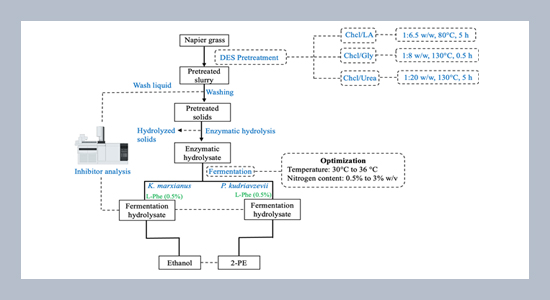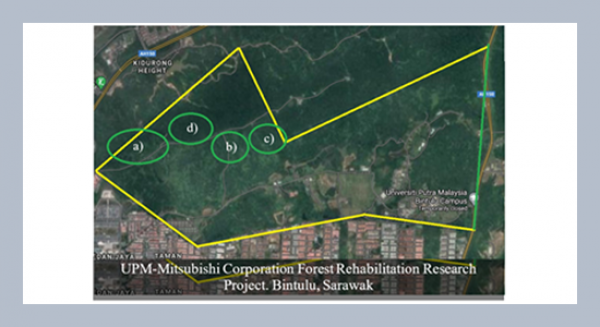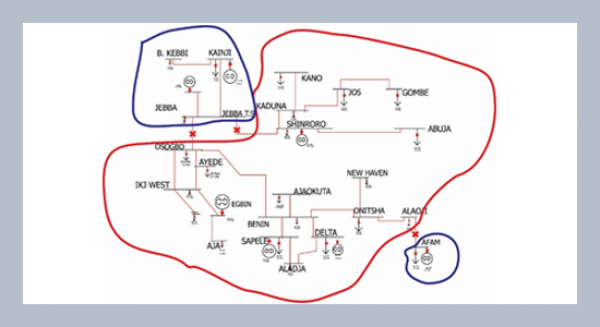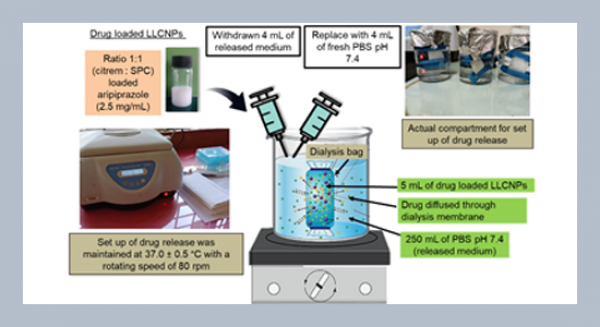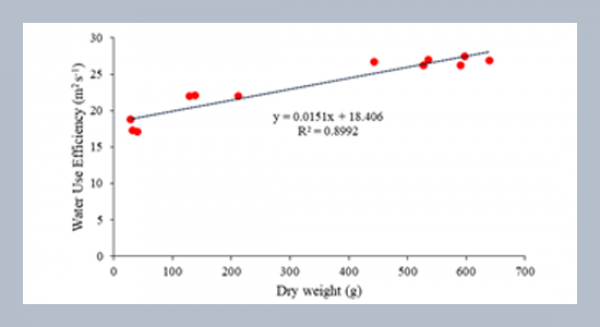REFERENCES
- Agrawal, R.., Verma, A., Singhania, R. R., Varjani, S., Di Dong, C., Patel, A.K. 2021. Current understanding of the inhibition factors and their mechanism of action for the lignocellulosic biomass hydrolysis. Bioresource Technology, 332, 125042.
- Akbarian, A., Andooz, A., Kowsari, E., Ramakrishna, S., Asgari, S., Cheshmeh, Z.A 2022. Challenges and opportunities of lignocellulosic biomass gasification in the path of circular bioeconomy. Bioresource Technology, 362, 127774.
- Akita, H., Goshima, T., Suzuki, T., Itoiri, Y., Kimura, Z.I., Matsushika, A. 2021. Application of Pichia Kudriavzevii NBRC1279 and NBRC1664 to simultaneous saccharification and fermentation for bioethanol production. Fermentation, 7, 83.
- Ao, T.J., Li, K., Mehmood, M.A., Zhao, X.Q., Bai, F.W., Boopathy, R., Liu, C.G. 2024. Process optimization for acidic deep eutectic solvent pretreatment of Corn Stover to enhance enzymatic saccharification. Biomass Conversion and Biorefinery, 14, 6215–6228.
- Ashokkumar, V., Venkatkarthick, R., Jayashree, S., Chuetor, S., Dharmaraj, S., Kumar, G., Ngamcharussrivichai., C. 2022. Recent advances in lignocellulosic biomass for biofuels and value-added bioproducts - A critical review. Bioresource Technology, 344, 126195.
- Baksi, S., Saha, D., Saha, S., Sarkar, U., Basu, D., Kuniyal, J.C. 2023. Pre-treatment of lignocellulosic biomass: Review of various physico-chemical and biological methods influencing the extent of biomass depolymerization. International Journal of Environmental Science and Technology, 20, 13895–13922.
- Baptista, M., Domingues, L. 2022. Kluyveromyces Marxianus as a microbial cell factory for lignocellulosic biomass valorisation. Biotechnology Advances, 60, 108027.
- Chamnipa, N., Thanonkeo, S., Klanrit, P., Thanonkeo, P. 2018. The Potential of the newly isolated thermotolerant yeast Pichia kudriavzevii RZ8-1 for high-temperature ethanol production. Brazilian Journal of Microbiology, 49, 378–391.
- Chinwatpaiboon, P., Saejao, C., Boonsombuti, A., Luengnaruemitchai, A. 2021. Optimization of ionic liquid 1-ethyl-3-methylimidazolium acetate pretreatment of Napier grass combined with acetic acid and ferric chloride under microwave radiation by response surface methodology. Biomass Conversion and Biorefinery, 13, 1–12.
- Chreptowicz, K., Sternicka, M.K., Kowalska, P.D., Mierzejewska, J. 2018. Screening of yeasts for the production of 2-phenylethanol (rose aroma) in organic waste-based media. Letters in Applied Microbiology, 66, 153–160.
- Chung Jr, H., Lee, S.L., Chou, C.C. 2000. Production and molar yield of 2-Phenylethanol by Pichia fermentans L-5 as affected by some medium components. Journal of Bioscience and Bioengineering, 90, 142–147.
- Conde-Báez, L., Castro-Rosas, J., Villagómez-Ibarra, J.R. Páez-Lerma, J.B. Gómez-Aldapa, C. 2017. Evaluation of waste of the cheese industry for the production of aroma of roses (phenylethyl alcohol). Waste and Biomass Valorization, 8, 1343–1350.
- Conde-Báez, L., López-Molina, A., Gómez-Aldapa, C., Pineda-Muñoz, C., Conde-Mejía, C. 2019. Economic projection of 2-phenylethanol production from whey. Food and Bioproducts Processing, 115, 10–16.
- Cordero-Soto, I.N., Huerta-Ochoa, S., Moussa, M., Ochoa-Martinez, L.A., Soto-Cruz, N.O., and Rutiaga-Quinones, O.M. 2020. Recent advances in the bioconversion of 2-phenylethanol through biotechnological processes for using as a natural food additive. Food Microbiology and Biotechnology, 231–247.
- Elgharbawy, A.A., Hayyan, M., Hayyan, A., Basirun, W.J., Salleh, H.M., Mirghani, M.E. 2020. A grand avenue to integrate deep eutectic solvents into biomass processing. Biomass and Bioenergy, 137, 105550.
- Etschmann, M.M.W., Sell, D. Schrader, J. 2003. Screening of yeasts for the production of the aroma compound 2-phenylethanol in a molasses-based medium. Biotechnology Letters, 25, 531–536.
- Fakayode, O.A., Akpabli-Tsigbe, N.D.K., Wahia, H., Tu, S., Ren, M., Zhou, C., Ma, H. 2021. Integrated bioprocess for bio-ethanol production from watermelon rind biomass: Ultrasound-assisted deep eutectic solvent pretreatment, enzymatic hydrolysis and fermentation. Renewable Energy, 180, 258–270.
- Fan, G., Cheng, L., Fu, Z., Sun, B., Teng, C., Jiang, X., Li, X. 2020. Screening of yeasts isolated from Baijiu environments for 2-Phenylethanol production and optimization of production conditions. 3 Biotech, 10, 1–17.
- Fisher, C., Scott, T.R. 2007. Introduction–problems in flavour research.
- Garavaglia, J., Flôres, S.H., Pizzolato, T.M., Peralba, M.D.C., Ayub, M.A.Z. 2007. Bioconversion of L-phenylalanine into 2-phenylethanol by Kluyveromyces marxianus in grape must cultures. World Journal of Microbiology and Biotechnology 23, 1273–1279.
- Gethins, L., Guneser, O., Demirkol, A., Rea, M.C., Stanton, C., Ross, R.P., Yuceer, Y., Morrissey., J.P. 2015. Influence of carbon and nitrogen source on production of volatile fragrance and flavour metabolites by the yeast Kluyveromyces marxianus. Yeast, 32, 67–76.
- Godoy, P., Udaondo, Z., Duque, E., Ramos, J.L. 2024. Biosynthesis of fragrance 2-Phenylethanol from sugars by Pseudomonas putida. Biotechnology for Biofuels and Bioproducts, 17, 51.
- Güneşer, O., Demirkol, A., Karagül Yüceer, Y., Özmen Toğay, S., İşleten Hoşoğlu, M., Elibol, M. 2015. Bioflavour production from tomato and pepper pomaces by Kluyveromyces marxianus and Debaryomyces hansenii. Bioprocess and Biosystems Engineering, 38, 1143–1155.
- Hassan, E.S.R., Mutelet, F. 2022. Evaluation of miscanthus pretreatment effect by Choline chloride based deep eutectic solvents on bioethanol production. Bioresource Technology, 345, 126460.
- Hoşoğlu, M.I. 2018. Study of increasing the production of volatile flavor compounds by the yeast Kluyveromyces marxianus through optimization of carbon and nitrogen sources. Food and Health, 4, 112–123.
- Kılmanoğlu, H., Hoşoğlu, M.İ., Güneşer, O., Yüceer, Y.K. 2021. Optimization of pretreatment and enzymatic hydrolysis conditions of tomato pomace for production of alcohols and esters by Kluyveromyces marxianus. LWT, 138, 110728.
- Kongkeitkajorn M.B., Sae-Kuay C., Reungsang, A. 2020. Evaluation of napier grass for bioethanol production through a fermentation process. Processes, 8, 567.
- Kumar, A.K., Parikh, B.S., Pravakar, M. 2016. Natural deep eutectic solvent mediated pretreatment of rice straw: Bioanalytical characterization of lignin extract and enzymatic hydrolysis of pretreated biomass residue. Environmental Science and Pollution Research, 23, 9265–9275.
- Kumar, N., Gautam, R., Stallings, J.D., Coty, G.G., Lynam, J.G. 2021. Secondary agriculture residues pretreatment using deep eutectic solvents. Waste and Biomass Valorization, 12, 2259–2269.
- Lee, K.M., Quek, J.D., Tey, W.Y., Lim, S., Kang, H.S., Quen, L.K., Mahmood, W.A.W., Jamaludin, S.I.S., Teng, K.H., Khoo, K.S. 2022. Biomass valorization by integrating ultrasonication and deep eutectic solvents: delignification, cellulose digestibility and solvent reuse. Biochemical Engineering Journal, 187, 108587.
- Li, C., Huang, C., Zhao, Y., Zheng, C., Su, H., Zhang, L., Luo, W., Zhao, H., Wang, S., Huang L.J. 2021. Effect of choline-based deep eutectic solvent pretreatment on the structure of cellulose and lignin in Bagasse. Processes, 9, 384.
- Li, P., Yang, C., Jiang, Z., Jin, Y., Wu, W. 2023. Lignocellulose pretreatment by deep eutectic solvents and related technologies: A review. Journal of Bioresources and Bioproducts, 8, 33–44.
- Liu, Y., WeiZhuo, X., Wei, X. 2022. A review on lipase-catalyzed synthesis of geranyl esters as flavor additives for food, pharmaceutical and cosmetic applications. Food Chemistry Advances, 1, 100052.
- Manokhoon, P., Rangseesuriyachai, T. 2020. Effect of two-stage sodium hydroxide pretreatment on the composition and structure of Napier Grass (Pakchong 1) (Pennisetum purpureum). International Journal of Green Energy, 17, 864–871.
- Martínez, O., A. Sánchez, A., Font, X., Barrena, R. 2018. Bioproduction of 2-henyplethanol and 2-phenethyl acetate by Kluyveromyces marxianus through the solid-state fermentation of sugarcane bagasse. Applied Microbiology and Biotechnology, 102, 4703–4716.
- Martínez-Avilla, O., Sánchez, A., Font, X., Barrena, R. 2020. 2-phenylethanol (rose aroma) production potential of an isolated Pichia kudriavzevii through solid-state fermentation. Process Biochemistry, 93, 94–103.
- Miller, G.L. 1959. Use of dinitrosalicylic acid reagent for determination of reducing sugar. Analytical Chemistry, 31, 426–428.
- Mitri, S., Koubaa, M., Maroun, R.G., Rossignol, T., Nicaud, J.M., Louka, N. 2022. Bioproduction of 2-Phenylethanol through yeast fermentation on synthetic media and on agro-industrial waste and by-products: A review. Foods, 11, 109.
- Mortzfeld, F.B., Hashem, C., Vranková, K., Winkler, M., Rudroff, F. 2020. Pyrazines: Synthesis and industrial application of these valuable flavor and fragrance compounds. Biotechnology Journal, 15, 2000064.
- Nie, K., Li, B., Song, Y., Qiao, X., Zhao, T., Zhang, Y., Ben, H., Han, G. 2023. A promising degumming method to prepare kenaf fibers by using recyclable deep eutectic solvents. Industrial Crops and Products, 191, 115990.
- Nie, K., Li, B., Wang, P., Song, Y., Ben, H., Han, G., Jiang, W., Ragauskas, A. 2024. Efficient fractionation of kenaf chemical components by using recyclable acidic DES. Industrial Crops and Products, 211, 118239.
- Oh, Y., Park, S., Jung, D., Oh, K.K., Lee, S.H. 2020. Effect of hydrogen bond donor on the choline chloride-based deep eutectic solvent-mediated extraction of lignin from pine wood. International Journal of Biological Macromolecules, 165, 187–197.
- Pakchamni, P., Afedzi, A.E.K., Parakulsuksatid, P. 2022. Optimization of alkaline-assisted organosolv pretreatment of sugarcane trash for the production of succinic acid using response surface methodology. Biocatalysis and Agricultural Biotechnology, 43, 102374.
- Pan, M., Zhao, G., Ding, C., Wu, B., Lian, Z., Lian, H. 2017. Physicochemical transformation of rice straw after pretreatment with a deep eutectic solvent of choline chloride/urea. Carbohydrate Polymers, 176, 307–314.
- Panakkal, E.J., Cheenkachorn, K., Chuetor, S., Dasari, S., Katam, K., Phusantisampan, T.S, Cheng, Y.S., Sriariyanun, M. 2024. A comparative study on effectiveness and recyclability of three different deep eutectic solvents for biomass fractionation. Biomass Conversion and Biorefinery, 1–15.
- Panakkal, E.J., Cheenkachorn, K., S. Chuetor, S., Tantayotai, S., Raina, P., Cheng, Y.S., Sriariyanun, M. 2022. Optimization of deep eutectic solvent pretreatment for bioethanol production from Napier Grass. Sustainable Energy Technologies and Assessments, 54, 102856.
- Panakkal, E.J., Cheenkachorn, K., Gundupalli, M.P., Kitiborwornkul, N., Sriariyanun, M. 2021a. Impact of sulfuric acid pretreatment of durian Peel on the production of fermentable sugar and ethanol. Journal of the Indian Chemical Society, 98, 100264.
- Panakkal, E.J., Kitiborwornkul, N., Sriariyanun, M., Ratanapoompinyo, J., Yasurin, P., Asavasanti, S., Rodiahwati, W., Tantayotai, P. 2021b. Production of food flavouring agents by enzymatic reaction and microbial fermentation. Applied Science and Engineering Progress, 14, 297–312.
- Procentese, A., Raganati, F., Olivieri, G., Russo, M.E., Rehmann, L., Marzocchella, A. 2017. Low-energy biomass pretreatment with deep eutectic solvents for bio-butanol production. Bioresource Technology, 243, 464–473.
- Raj, T., Singh, V. 2024. Natural deep eutectic solvents (NADES) assisted deconstruction of oilcane bagasse for high lipid and sugar recovery. Industrial Crops and Products, 210, 118127.
- Research Dive. (2022). Packaged food products market. Retrieved July 17, 2024, from https:// www.researchdive.com/8397/packaged-food-products-market.
de Jesús Rodríguez-Romero, J., Aceves-Lara, C.A., Silva, C.F., Gschaedler, A., Amaya-Delgado, L., Arrizon, J. 2020. 2-Phenylethanol and 2-phenylethylacetate production by nonconventional yeasts using Tequila vinasses as a substrate. Biotechnology Reports, 25, e00420.
- Sai, Y.W., Lee, K.M. 2019. Enhanced cellulase accessibility using acid-based deep eutectic solvent in pretreatment of empty fruit bunches. Cellulose, 26, 9517–9528.
- Sandoval-Nuñez, D., Arellano-Plaza, M., Gschaedler, A. Arrizon, J. Amaya-Delgado, L. 2018. A comparative study of lignocellulosic ethanol productivities by Kluyveromyces marxianus and Saccharomyces cerevisiae. Clean Technologies and Environmental Policy, 20, 1491–1499.
- Scognamiglio, J., Jones, L., Letizia, C.S., Api, A.M. 2012. Fragrance material review on phenylethyl alcohol. Food and Chemical Toxicology, 50, S224–S239.da Silva, F.L., de Oliveira Campos, A., dos Santos, D.A., Magalhães, E.R.B., de Macedo, G.R., dos Santos, E.S. 2018. Valorization of an agroextractive residue—Carnauba Straw—for the production of bioethanol by simultaneous saccharification and fermentation (SSF). Renewable Energy, 127, 661–669.
- Sriariyanun, M., Mutrakulcharoen, P.A.R.I.T.A., Tepaamorndech, Dech, S.U.R.A.P.U.N., Cheenkachorn, K., Rattanaporn, K. 2019. A rapid spectrophotometric method for quantitative determination of ethanol in fermentation products. Oriental Journal of Chemistry, 35, 744–750.
- Tian, D., Guo, Y., Hu, J., Yang, G., Zhang, J., Luo, L., Xiao, Y., Shen, F. 2020. Acidic deep eutectic solvents pretreatment for selective lignocellulosic biomass fractionation with enhanced cellulose reactivity. International Journal of Biological Macromolecules, 142, 288–297.
- Tinôco, D., Genier, H.L.A., da Silveira, W.B. 2021. Technology valuation of cellulosic ethanol production by Kluyveromyces marxianus CCT 7735 from sweet Sorghum Bagasse at elevated temperatures. Renewable Energy, 173, 188–196.
- Wang, Z., Bai, X., Guo, X. He, X. 2017. Regulation of crucial enzymes and transcription factors on 2-phenylethanol biosynthesis via Ehrlich pathway in Saccharomyces cerevisiae. Journal of Industrial Microbiology and Biotechnology, 44, 129–139.
- Wei, H.L., Wang, Y.T., Hong, Y.Y., Zhu, M.J. 2021. Pretreatment of rice straw with recycled ionic liquids by phase-separation process for low-cost biorefinery. Biotechnology and Applied Biochemistry, 68, 871–880.
- Yan, D., Ji, Q., Yu, X., Li, M., Fakayode, O.A., Yagoub, A.E.A., Chen, L., Zhou, C. 2021. Multimode-ultrasound and microwave assisted natural ternary deep eutectic solvent sequential pretreatments for corn straw biomass deconstruction under mild conditions. Ultrasonics Sonochemistry, 72, 105414.
- Semelsberger, T.A., Li, C., Tanjore, D. 2020. Characterizing variability in lignocellulosic biomass: A review. ACS Sustainable Chemistry and Engineering, 8, 8059–8085.
- Zhao, B.Y., Xu, P., Yang, F.X., Wu, H., Zong, M.H., Lou, W.Y. 2015. Biocompatible deep eutectic solvents based on choline chloride: Characterization and application to the extraction of rutin from Sophora japonica. ACS Sustainable Chemistry & Engineering, 3, 2746–2755.
- Zhou, R., Song, Q., Xia, H., Song, N., Yang, Q., Zhang, X. Yao, L., Yang, S., Dai, J., Chen, X. 2023. Isolation and identification of non-saccharomyces yeast producing 2-Phenylethanol and study of the ehrlich pathway and shikimate pathway. Journal of Fungi, 9, 878.
